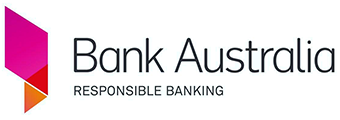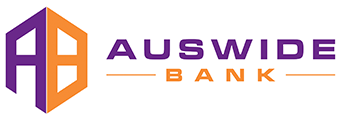In an ideal world, we'd all be able to perfectly synchronise the dates that we sell our old home and purchase a new one. But selling via private treaty can be unpredictable, and the auction marketing process is typically done and dusted in four weeks. Sometimes, you find your dream home and you want to secure it before someone else swoops in - but you don't have the funds or inclination to purchase it because the dust hasn't settled on your old home.
That's where a bridging loan comes in.
What is a bridging loan?
A bridging loan is a short-term financing solution designed to cover brief gaps in funding. Many people use it to buy a new home before receiving the funds from selling their current home.
Think of a bridging loan as a line of credit that covers the gap between buying a new property and receiving the settlement funds from selling your old property.
Typically, a bridging loan is an interest-only home loan with a term of up to 6 or 12 months. The expectation is that you will sell your existing home within this period.
Bridging loans can be arranged quickly, making them ideal for buyers who need to secure a new property swiftly. One bridging finance lender, Bridgit (formerly known as TechLend), says it can approve finance in a day.
Most bridging loans are only for the purchase of existing property, though some lenders may offer bridging loans for the construction of a new property. If you would rather stay in your current home while you build your new home, a bridging loan can be a good option as it saves you from the hassle of selling your home and renting elsewhere in the meantime.
There are also bridging loans for seniors who are moving into another home/assisted living facility while their current home is on the market or are waiting for retirement benefits to start flowing.
Which lenders offer bridging loans?
Considering a bridging loan? Here are some of the best deals and interest rates available
| Lender | Home Loan | Interest Rate | Comparison Rate* | Monthly Repayment | Repayment type | Rate Type | Offset | Redraw | Ongoing Fees | Upfront Fees | Max LVR | Lump Sum Repayment | Extra Repayments | Split Loan Option | Tags | Features | Link | Compare | Promoted Product | Disclosure |
|---|---|---|---|---|---|---|---|---|---|---|---|---|---|---|---|---|---|---|---|---|
7.75% p.a. | 6.08% p.a. | $3,229 | Interest-only | Variable | $0 | $230 | 80% | Disclosure | ||||||||||||
7.40% p.a. | 7.48% p.a. | $3,462 | Principal & Interest | Variable | $0 | $250 | 80% | |||||||||||||
8.00% p.a. | 6.33% p.a. | $3,333 | Interest-only | Fixed | $null | $null | 80% | |||||||||||||
7.60% p.a. | 7.65% p.a. | $3,530 | Principal & Interest | Variable | $0 | $745 | 80% | |||||||||||||
9.02% p.a. | 9.05% p.a. | $3,758 | Interest-only | Variable | $0 | $300 | 85% | |||||||||||||
9.04% p.a. | 9.13% p.a. | $3,767 | Interest-only | Variable | $0 | $1,110 | 72% | |||||||||||||
9.26% p.a. | 9.42% p.a. | $3,858 | Interest-only | Variable | $10 | $$formattedUpfrontFees.format("%,d",$!{product.upfrontFees}) | 80% |
How do bridging loans work?
When you take out a bridging loan, the loan amount depends on the remaining debt on your old property and the purchase price of your new property. Together, these are called your 'peak debt'.
For example, if you owe $350,000 on your old home and your new home costs $900,000, your peak debt is $1,250,000. Lenders usually let you borrow up to 80% of this amount. They also consider the expected sale price of your old property and selling costs.
When you sell your old home, the remaining debt is called your 'end debt.' For instance, if your peak debt is $1,250,000 and you sell your old property for $650,000, your end debt is $600,000.
The sale proceeds of your old property pay off the existing debt, closing the bridging loan. The remaining debt, mostly for the new property, becomes a standard home loan. You then start making repayments on this new loan, and any extra money from the sale can reduce the principal.
Contact your lender to understand the conditions after the bridging loan period ends.
Lenders may apply a 'fire sale' buffer, reducing your property's estimated value by 10-15% to account for a quick sale at a lower price.
You'll need to pay both your original home loan and the bridging finance during this period. You'll likely need to show you can cover the interest costs of the bridging loan.
How to compare bridging loan lenders
When comparing lenders who offer bridging loans, it's important to consider a few key factors: interest rates, terms and conditions, and additional fees.
Interest rates for bridging loans can vary significantly among lenders. For example, at the time of writing, Newcastle Permanent offers a bridging loan with a rate of 6.39% p.a. and a comparison rate of 6.43% p.a. Meanwhile, Heritage Bank has a higher rate at 9.54% p.a. for owner-occupied properties, with a comparison rate of 9.64% p.a. Bridgit offers a competitive rate with an interest-free period for the first month, but subsequent rates depend on the specifics of the loan scenario.
Bridging loans typically have a term of up to 12 months. If the property isn't sold within this time, lenders may impose higher interest rates or consider the loan in default. For example, Newcastle Permanent may require a 2% higher rate if the property is not sold within the 12-month term. Heritage Bank also specifies that no repayments are necessary until the end of the loan term, making it potentially easier for borrowers to manage cash flow during the bridging period.
Besides interest rates, terms and conditions, borrowers should also be aware of additional fees such as application fees, valuation fees, and any penalties for early or late repayment. Bridging loans often include these fees, which can add to the overall cost of borrowing. For example, application fees might vary, and there could be charges for property valuations needed to secure the loan.
When comparing bridging loans, use comparison rates to get a more accurate picture of the total cost, as they include most fees and charges. Additionally, carefully read the product disclosure statements (PDS) for penalty and default clauses. Lenders such as ANZ, Commonwealth Bank, NAB, and Westpac are also key players in the bridging loan market, and their offerings should be evaluated alongside those from smaller lenders like Bank Australia, Heritage Bank, and non-bank lenders like Bridgit.
What is the average interest rate for a bridging loan?
Bridging loan interest rates tend to be higher than normal owner-occupier loans. For example, if a regular home loan is around 6.00% p.a., it won't be unusual to see a bridging loan around the 8-9% p.a. mark.
This is because the terms are shorter, and the lender's risk is generally higher. No that doesn't mean you're a deadbeat. However, stuff happens. Maybe the buyer's finance for your old home falls over and some hiccups happen. Maybe your new home is revalued at less than you thought.
And because the interest rate is expressed as p.a. - per annum or year - when condensed down to three or six months, the interest paid in reality is half or a quarter of that.
How do bridging loan repayments work?
During the bridging period, borrowers typically accrue interest on both the existing home loan and the new home loan. Managing principal and interest repayments on a larger debt can be challenging.
Fortunately, many bridging loans require only interest-only repayments, making them easier to manage. Some lenders allow the option to delay repayments by adding the interest to the loan balance, though this means you'll pay interest on the interest.
Additionally, lenders often permit voluntary principal payments during the bridging period, which can help reduce the total interest paid.
What types of bridging loans are available?
There are two types of bridging loans: open and closed bridging loans. Whether you need a closed bridging loan or an open one will depend on where you are in the process of selling your existing property.
Closed bridging loan
A closed bridging loan is used if you already have a contract of sale on your current property and your settlement date is fixed. A closed bridging loan can give you temporary finance so you can buy your new property while you wait for the funds of the sale to come through.
Closed bridging loans are seen as being less risky and they're generally easier to get than an open bridging loan because the sale of your old home has already been 'locked in'.
You can capitalise the repayments into a single sum and pay it once you've received the funding from the sale of your old home.
Open bridging loan
An open bridging loan is used by buyers who have found their dream home and want to secure it even though they haven't found a buyer for their current place of residence. As you can imagine, lenders are a bit more hesitant to offer an open bridging loan because the risk is greater.
Lenders will expect to see details about the new property and proof that you're actually marketing your current home. Many lenders will also insist you have an exit strategy in place in case you can't find a buyer for your current home. It's likely you will also need a significant amount of equity in your current home to draw from.
How long can you have a bridging loan for?
The duration of a bridging loan varies based on its type and the lender. Typically, bridging loans are short-term, ranging from three to 12 months. It's extremely unlikely to find a bridging period offered for longer than 12 months because bridging loans are only a short-term finance solution.
Larger banks often offer longer terms, while smaller lenders may provide shorter durations.
Pros of bridging loans
- Convenience: Secure your new home quickly, even if your old one hasn't sold yet.
- Repayments: Avoid paying two sets of principal and interest repayments simultaneously.
- Avoid renting: Skip the hassle of renting between selling your old home and buying a new one.
Cons of bridging loans
- Interest rates: Typically higher than standard home loans.
- Interest on interest: Capitalising interest costs can lead to paying interest on your interest.
- Pressure to sell: Failing to sell your property within the agreed period can result in a large interest bill or forced sale by the bank.
- Fees: Additional fees and charges often apply.
- Valuations: You may need to pay for two property valuations, increasing costs.
Bridging loan eligibility criteria
To qualify for a bridging loan, lenders typically require:
- Significant equity in your current property: Many lenders prefer to see around 50% equity. This provides a cushion if your property doesn't sell quickly.
- Assurance of selling the existing property within the loan term: While it's hard to predict, many bridging loans are valid for up to 12 months.
- Capacity to manage interest-only repayments during the bridging period: Interest-only repayments are lower, but you will still incur interest costs, which will be considered when your old home sells.
- Availability of bridging loans from your lender: Some lenders only offer bridging loans to existing customers. If your current lender doesn't provide this option, you might need to refinance with a lender that does, especially if you have a longer timeframe or are just considering selling.
Alternatives to a bridging loan
Cash out your home's value to downsize smoothly
Thinking of moving to a smaller place but worried your current home holds you back financially? Refinancing your mortgage can help unlock the equity you've built up, giving you more cash for your down payment on a new property.
This strategy lets you briefly own both homes while you transition. Be aware though, refinancing usually means higher monthly payments due to a larger principal and interest amount compared to an interest-only bridging loan.
Considering refinancing? Here are some of the best deals on the market.
| Lender | Home Loan | Interest Rate | Comparison Rate* | Monthly Repayment | Repayment type | Rate Type | Offset | Redraw | Ongoing Fees | Upfront Fees | Max LVR | Lump Sum Repayment | Extra Repayments | Split Loan Option | Tags | Features | Link | Compare | Promoted Product | Disclosure |
|---|---|---|---|---|---|---|---|---|---|---|---|---|---|---|---|---|---|---|---|---|
5.54% p.a. | 5.58% p.a. | $2,852 | Principal & Interest | Variable | $0 | $530 | 90% |
| Promoted | Disclosure | ||||||||||
5.49% p.a. | 5.40% p.a. | $2,836 | Principal & Interest | Variable | $0 | $0 | 80% |
| Promoted | Disclosure | ||||||||||
5.64% p.a. | 5.89% p.a. | $2,883 | Principal & Interest | Variable | $250 | $250 | 60% |
| Promoted | Disclosure | ||||||||||
5.64% p.a. | 5.89% p.a. | $2,883 | Principal & Interest | Variable | $248 | $350 | 60% |
| Disclosure |
Longer settlement period
A simpler approach might be to request that the vendor of your new property extend the settlement period of your new home to give you more time to sell your existing home. However, this depends on their circumstances; the vendor may not be willing to wait longer than necessary to finalise the sale.
Subject to sale clause
Include this clause in your purchase contract (subject to vendor approval).
Renting as a temporary solution
One potential solution to the challenge of synchronising property sales and purchases is to rent either your current property or the new one. You could negotiate a short-term lease with either the buyer of your existing home or the seller of your new home. This temporary arrangement could bridge the gap and provide the flexibility needed during the transition.
Consider a construction loan
If you're facing a gap between selling your current property and moving into one that is under construction or being renovated, a construction home loan could be an ideal solution. Similar to bridging loans, construction home loans often allow borrowers to make interest-only repayments until the construction is complete and they are ready to move in.
Additionally, construction home loans typically disburse funds in stages to cover construction costs as they arise, which means you might not have to pay interest on the entire loan amount from the beginning. This staged funding can help manage cash flow more effectively during the building process.

Ready, Set, Buy!
Learn everything you need to know about buying property – from choosing the right property and home loan, to the purchasing process, tips to save money and more!
With bonus Q&A sheet and Crossword!













 Harry O'Sullivan
Harry O'Sullivan
 Bea Garcia
Bea Garcia
 Denise Raward
Denise Raward



